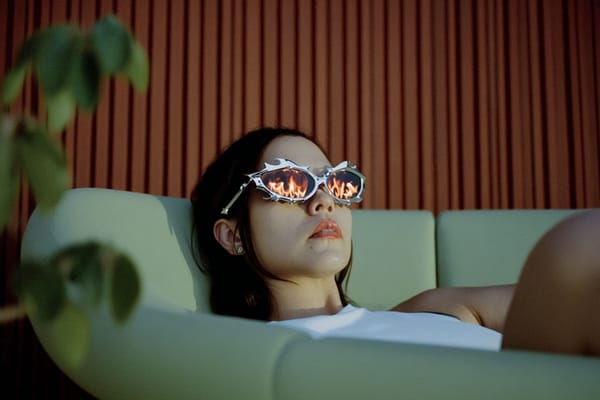What Is Noise? A Simple Guide to How It Shapes Creativity and AI
A beginner-friendly look at why noise is everywhere in creativity.

Dear friends,
today I want to dive a bit into the topic of noise.
If you are a visual creative you probably came across noise already.
Same when you are a musician or even in daily live looking at an old TV…
Also in AI noise plays a very big role. I will get to this at the end of this article.
But what is noise?
If you look at noise on a screen, it will probably look like this:

In this image you see a lot of pixels. Some of them are black, some of them are gray and some of them are white.
This is basically it.
If you would write down the value of each pixel from the image above, you would end up with a long list, similar to this:
0
0.4
0.8
1
0.1
0.5
0.8
0.2
0
1
0 means black,
0.4 means a 40% gray
1 means white
So noise is just a very long list of random numbers.
If you visualize it, it looks like a snowstorm on TV. If you would listen to it, it sounds like: schhhhhhhhhhhhhhhhschhhschhhhshchhhschhhhhsssssccccchhhh
But why is this actually a cool thing?
The cool thing about noise is that you can play with it creatively.
As I said before, noise is actually just a long list of numbers which got generated randomly.
And believe it or not. You can use different random generators to achieve different "random" results. You can for example use a random generator which takes care that all the numbers are spread out equally. Or you can use a random generator which clusters values in groups.
Imagine you're throwing a bunch of dice.
- If you use a balanced random generator, it’s like the dice are enchanted to make sure every number comes up roughly the same amount over time. You’ll see a fair spread of all numbers, evenly distributed.
- If you use a clustered random generator (for example Gaussian or Perlin), it’s like the dice sometimes “team up” to show similar numbers more often, creating groups of numbers that are closer together rather than evenly spread out.
The cool thing about this type of generator is that you can adjust parameters to control the clustering—like how tight or spread out the groups are—or even tweak other characteristics to influence the randomness further.
Both are still “random,” but they feel different in how the results are arranged.
Here are some visual examples of how different random generators work. In these animations, every frame shows a new noise image. By playing around with just basic noise, you can already create some super cool and dynamic visuals.
Basic gaussian noise
Perlin noise
Perlin noise - modified
Perlin noise - modified
Two Perlin noises overlayed
That was just quickly and hopefully easily demonstrating what can be achieved by playing around with basic noise.
In music production, a noise is many times the beginning of synthesizing new sounds. You start with a basic sssscccchhhhhh. But then you could pitch it lower and you get a wwwwwwsccchhhwwwwwchh.
And then you could add a rhythm to it and you get wwschh wwschh wwschh
And what about AI?
I also want to briefly explain what noise has to do with AI because when generating images with AI noise plays an important role.
The basic process of training AI models and then generating images with it goes like this:
1. Collection of images
We need a big collection of images with a description of each image.
2. Add noise to those images (Forward Diffusion)
Then we add noise to each image step by steps. Around 1000 times. So the image becomes noisier and noisier - until we cannot recognize it anymore.

3. Collection of noisy images
Now we have a big collection of noisy images. But even though we humans cannot see the apple anymore, the apple is still there.
And we don't only have images of an apple. We have images of everything. Of houses, people, nature, architecture, fashion, pineapples etc.
And they are all noisy.
4. Generating an image (Reverse Diffusion)
Now we are using our AI image generation tool to generate our image.
Let's say we want an image of a boy holding an apple.
We tell our software: Boy holding an apple
And it takes all the noisy images which are linked with the word boy and apple - and step by step it denoises it. That means that it looks for super minimal patterns in the noise which could resemble a boy eating an apple.

Of course this is super simplified. But thats the general idea of training image models with AI and producing images with it.
Here is a link to the PDF about High-Resolution Image Synthesis with Latent Diffusion Models.

That article got a bit technical. But I am currently learning a lot about the deeper processes of image generation with AI - and felt like sharing this.
Much love!
Marius




